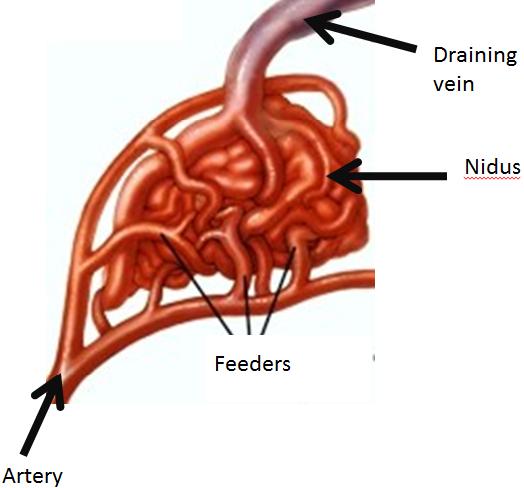Arteriovenous Malformations' (AVMs) expert and Consultant Neurosurgeon, Mr Christos Tolias describes how AVMs can occur anywhere in the brain and spinal cord. Brain AVMs can occur on the surface (cortical), deep (in the thalamus, basal ganglia, or brainstem), and within the dura (the tough protective covering of the brain). Spinal AVMs can occur on the surface (extramedullary) or within the spinal cord (intramedullary). These AVMs account for approximately 2% of haemorrhagic strokes annually.
AVMs of the brain and spine are relatively rare and are present at birth. They affect both men and women at about the same rate. They can occur at all ages, but are most often symptomatic between 20 and 40 years of age. Detecting and treating AVMs is important to reduce the rate of stroke in the UK.
Most AVMs do not show symptoms until a bleed occurs although common signs of brain AVMs include:
- Sudden onset of a severe headache, vomiting, stiff neck.
- Seizures.
- Migraine-like headaches.
- Swelling or redness of an eye.
- Noise in the head, called a "bruit”.
An AVM or arteriovenous malformation forms when arteries connect directly to veins. This direct connection forms a high-pressure shunt or fistula. The veins are not able to handle the pressure of the blood coming directly from the arteries. The veins stretch and enlarge to create a “nidus”. Usually there are multiple feeding vessels in an AVM and many draining veins.
Full medical glossaryAn AVM or arteriovenous malformation forms when arteries connect directly to veins. This direct connection forms a high-pressure shunt or fistula. The veins are not able to handle the pressure of the blood coming directly from the arteries. The veins stretch and enlarge to create a “nidus”. Usually there are multiple feeding vessels in an AVM and many draining veins.
Full medical glossary


